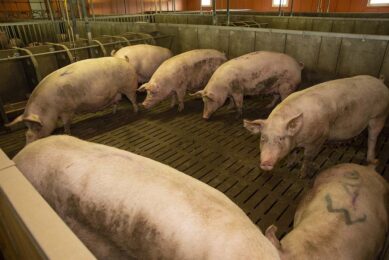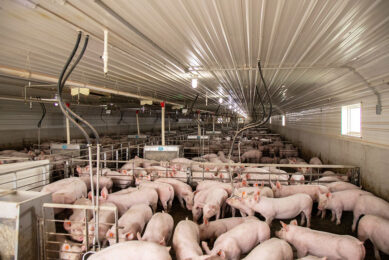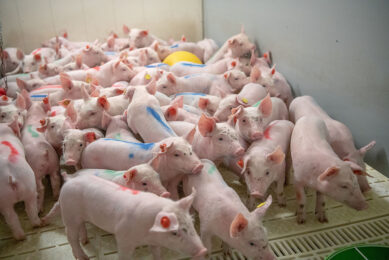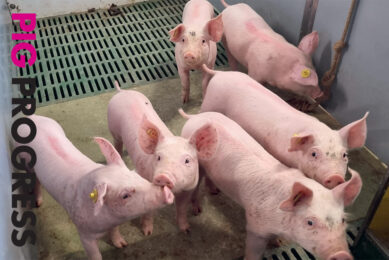Scientists develop ‘Intelligent Farrowing Pen’
Scientists at the Faculty of Agricultural Sciences at the University of Aarhus aim to reduce piglet mortality by developing a new type of climate control and monitoring in farrowing pens. The result could be improved pig welfare and farmer finances.
Climate control
Part of the concept of the intelligent pen includes climate control right down on the level of the individual farrowing pen. Warmth is what the little pigs really appreciate in their first few days of life.
Quite a few piglets die due to lack of oxygen during birth. Others are born weak or are chilled immediately post partum. Such piglets are in great risk of dying. On average, one whole pig per litter can be saved just by providing warmth immediately after birth. That alone would be a huge economical boost, says senior scientist and project leader Lene Juul Pedersen from the Department of Animal Health, Welfare and Nutrition at the Faculty of Agricultural Sciences.
Regulating heat right down on the level of the individual pen is the aim of the scientists. Today climate is regulated for a whole farrowing house unit at a time. We would like to develop methods that build on our knowledge of the animals’ behaviour. On the basis of their behaviour we can predict when the farrowing will take place and couple that to advanced heat control so we can regulate the climate in each pen according to the needs of the animals in it.
Activity registered
Together with Skov A/S, the scientists will develop a system whereby the condition and activity of the animals will be registered. When the system predicts when the sow is expected to farrow, a message is given to the farmer and to a climate control system that ensures that there is more heat in the pen. Not only does this save piglets. It could perhaps also save heating bills in the farrowing barn, which is usually kept at around 20° C.
Apart from the level of activity, we would also like to develop sensors that can measure conditions such as where in the pen the sow and her piglets are and how the sow and her piglets are doing. This would provide the farmer with important information about the well-being of the animals and if there are any problems coming on, the farmer can take action before small problems grow big.
The research project will also be investigating whether it is most practical to measure conditions using sensors, chips in the ear or video surveillance.
Related Website
• University of Aarhus
Join 18,000+ subscribers
Subscribe to our newsletter to stay updated about all the need-to-know content in the pigsector, three times a week. Beheer
Beheer










 WP Admin
WP Admin  Bewerk bericht
Bewerk bericht